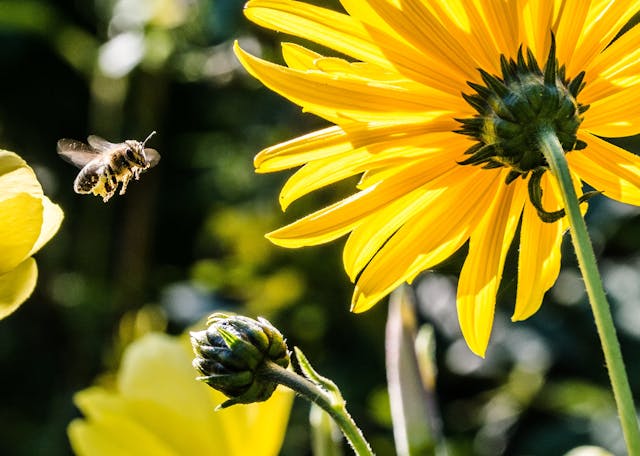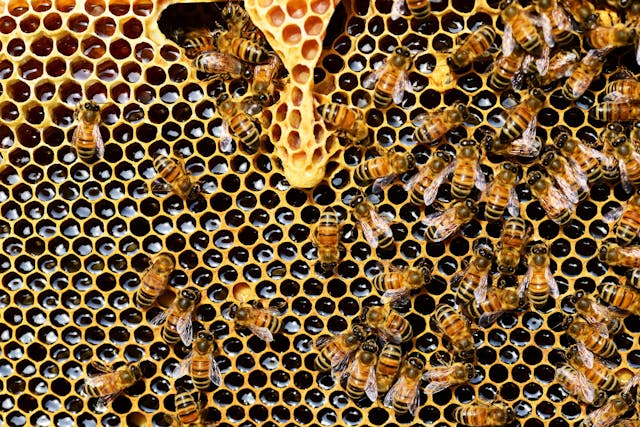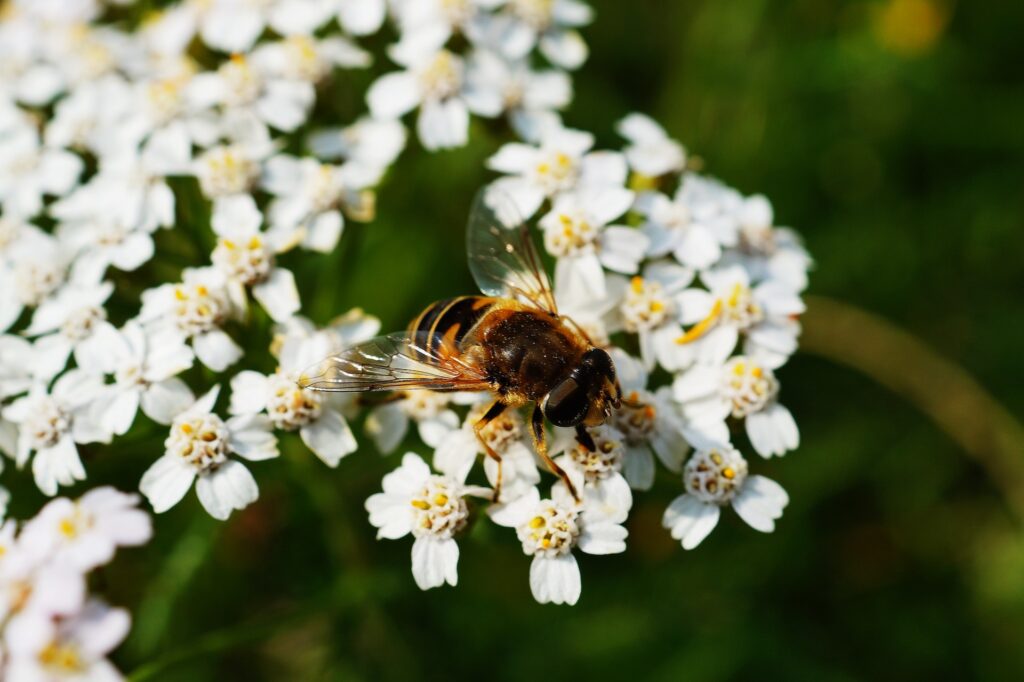Bumblebees are essential to nature, the Earth, and humanity due to their critical role in pollination. These industrious insects are pivotal for the pollination of many crops and wildflowers, ensuring the production of fruits, vegetables, and seeds. This process supports biodiversity, ecosystem health, and agricultural productivity, making bumblebees indispensable to both natural environments and human food supplies.
These beauties are found in temperate regions across the world, living in diverse environments such as meadows, gardens, and forests. They often nest in abandoned rodent burrows, under tussocks of grass, or in crevices. Their hives, or colonies, are typically small compared to those of honeybees, comprising a single queen, a few hundred worker bees, and males (drones). The family structure revolves around the queen, who lays eggs while the workers forage for nectar and pollen to feed the colony. This intricate social structure is key to their survival, ensuring that all members contribute to the hive’s success.

Bumblebees thrive because of their symbiotic relationship with flowering plants. They collect nectar for energy and pollen for protein, inadvertently transferring pollen between flowers and facilitating fertilization. This mutualistic relationship underscores the delicate balance of ecosystems, highlighting the importance of both parties to the broader environment.
Have you ever come across a tired bumblebee, sluggishly crawling on the ground or resting on a flower with a heavy demeanor? These charming pollinators occasionally need a little boost, and you can be their hero with just a few simple steps. If you see a tired bee, first make sure it is indeed exhausted and not injured. A fatigued bee will often appear slow, lethargic, and unable to fly.
One of the best ways to help is by providing a quick energy fix. A small spoonful of sugar water can work wonders. Mix two teaspoons of white granulated sugar with one teaspoon of water to create this life-saving solution. Offer it to the bee on a spoon or a small dish. The bee should sip from it and, with luck, regain enough energy to continue its vital work of pollination.
Remember, while helping our fuzzy friends, avoid using honey as it can sometimes contain harmful pathogens for bees. Also, never use artificial sweeteners as they lack the nutrients bees need. To support bumblebee populations, we can plant a variety of flowers that bloom at different times of the year, ensuring a continuous food source. Flowers such as lavender, foxglove, borage, and sunflowers are particularly attractive to bumblebees. Avoiding pesticides and providing habitats, like leaving patches of undisturbed land and installing bee hotels, can also help bumblebees thrive.

Bumblebees are not just charming little creatures buzzing around our gardens; they are indispensable allies in maintaining the health of our ecosystems. Their role in pollination is crucial for the growth of fruits, vegetables, and flowers, directly impacting our food supply and the environment. By supporting bumblebees, whether through planting bee-friendly flowers, avoiding pesticides, or creating bee habitats, we contribute to a healthier planet and a more sustainable future. Let’s join hands in protecting these tiny, industrious pollinators, ensuring they continue to thrive and enchant us with their gentle presence. Together, we can make a significant difference in preserving the beauty and balance of nature.


Pingback: The Enchanting World of Butterflies: Nature’s Living Jewels – Nomadify
Pingback: The Enchanting World of Hummingbirds: Nature’s Tiny Marvels – Nomadify
Pingback: Healing Plants For Your Garden – Nomadify